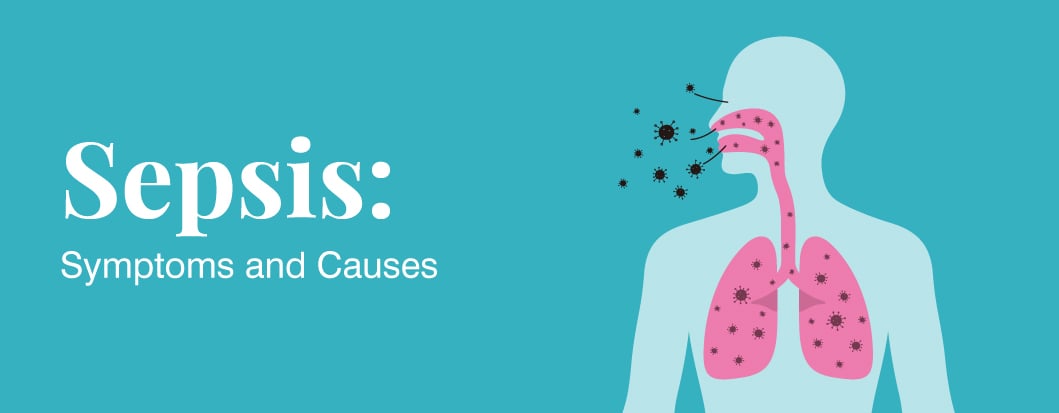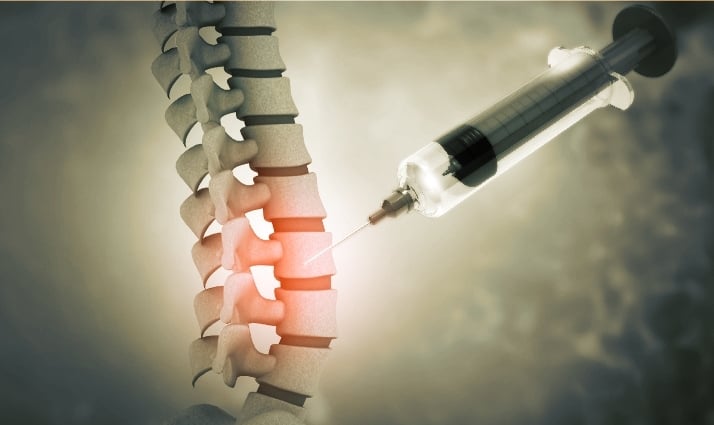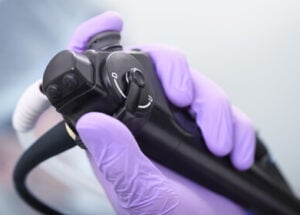Sepsis: Symptoms and Causes
March 7, 2025

Sepsis is the situation when the organism reacts to the infection in excessive amounts and poses a threat to the patient’s life. This happens because septicemia is a type of sepsis where the bacteria causing the initial infection spread in blood and throughout the body. This will result in a string of occurrences leading to organ complications, resulting in organ failures, and in very severe cases, could be fatal. Septicemia should always be recognized in its infancy so that treatment can commence early enough in order to boost recovery. This is a dangerous condition that can be fatal if only proper measures are taken at the right time.
What are the Three Stages of Sepsis?
Recognizing these stages is crucial for early detection and prompt medical intervention.
Sepsis
The septic shock itself is the first phase. This is a stage whereby the body identifies an infection and produces chemical substances that destroy it. Nevertheless, these chemicals elicit systemic inflammation, with the subsequent chain of events possibly causing damage to essential organs. Sepsis manifests as severe fever, increased heart rate, rapid breathing, and a sense of being gravely ill. Detecting at this early stage and treating promptly is important because, without timely intervention, it can lead to further development of Cardiovascular disease and other health complications.
Severe Sepsis
Sepsis can degenerate to severe sepsis if left untreated. At this point, the condition deteriorates, and the patient loses function in different organs. Blood pressure decreases considerably, affecting blood circulation to essential organs. Organs like the heart, kidneys, and lungs may fail to function normally. The symptoms may include reduced urinary output, difficulty breathing, and mental confusion on set patients. Immediate attention is needed since it will stabilize the patient’s condition and prevent other problems.
Septic Shock
The last one, and the most serious, is septic shock. In that condition, there is a great decline in blood pressure, leading to the failure of various organs like hearts and others. In this case, the body reacts to the infection to such an extent that it develops the situation, leading to a lifeless condition. This manifests as an abrupt decline in blood pressure with changes in mentation that may result in unconsciousness. It is crucial for the patients to receive intensive care and to have the most aggravated assistance methods, such as intravenous fluids, including medication, to ensure the work of the fading organs and increase the chances of survival.
Symptoms
Sepsis happens when the body’s immune response to an infection causes widespread inflammation, resulting in serious complications. Identifying the early signs and symptoms is essential for prompt medical intervention.
Early Signs of Sepsis
Sepsis is a fatal infection-related disease. It needs early recognition of its symptoms for prompt medication to be applied in time. Pay close attention to signs like high temperature, chilly sensation, increased rate of heart beat, and difficulty in breathing. These are non-specific symptoms and may even be the early signs of sepsis.
Altered Mental State
Confusion or an altered mental status can indicate sepsis of the brain. Confusion and drowsiness suddenly with insufficient energy can mean sepsis. You should seek immediate medical assistance if such symptoms occur.
Hypotension (Low Blood Pressure)
Sepsis can have such a drastic expression as a drop in blood pressure. The body reacts to disruptions of normal blood vessel functions caused by an infectious disease in this phase. The organism can fail due to persistent low blood pressure. If you experience weakness, lightheadedness, or dizziness along with low blood pressure, seek immediate medical assistance as it is an emergency.
Elevated Heart Rate
Tachycardia (an unusual increase in the pulse) is the standard presentation for sepsis. An accelerated pulse may result when the body tries to fight the infection, and the heart works hard. Keep in mind fast and frequent heartbeats, along with others such as fever and low blood pressure.
Respiratory Distress
Difficulty breathing is also common, as it may affect the respiratory system when a patient has sepsis. Sepsis may affect your lungs as shown by rapid, shallow breathing and/or shortness of breath (cannot catch one’s breath). This sign must be treated on time as it can lead to other more severe problems.
Causes
Sepsis can arise from various infections that spread throughout the body, overwhelming the immune system. Recognizing these causes is key to early detection and prevention.
Bacterial Infections
Sepsis often stems from untreated bacterial infections, such as urinary tract infections (UTIs) or pneumonia. These pathogens can infiltrate the bloodstream, triggering a systemic response.
Wound Infections
Inadequately treated wounds, whether from surgery or injuries, can become a breeding ground for bacteria. When these infections spread, they may lead to sepsis.
Weak Immune System
Individuals with compromised immune systems are at a higher risk of developing sepsis. Conditions like HIV, cancer, or undergoing immunosuppressive therapies can weaken the body’s defenses.
Medical Procedures
Specific medical treatments, like catheter insertions or invasive surgeries, pose an infection risk. If proper hygiene protocols are not followed, bacteria can enter the bloodstream.
Respiratory Infections
Severe respiratory infections, such as severe influenza or lung infections, can contribute to sepsis. Infection-induced inflammation can quickly spread throughout the body.
Gastrointestinal Infections
Infections in the digestive tract, such as peritonitis or severe cases of food poisoning, can introduce harmful bacteria into the bloodstream, triggering sepsis.
Diagnosis
A prompt and precise diagnosis of sepsis is essential for timely treatment and better patient outcomes. The following methods help in identifying sepsis and assessing its severity.
Recognizing the Signs
- Symptoms like fever, tachycardia, and altered mentality.
- The awareness of the possible infection avenues, such as the respiratory and urinary tracts.
Clinical Evaluation
- Physical exams should be highly extensive since any indication of oncoming septicemia must be noted at such a stage.
- Using blood tests to determine white blood cell count and other biomarkers.
Role of Imaging Studies
- The usage of diagnostic imaging such as X-rays and CT scans to locate the site of infection in an individual’s body.
- A key factor in the development of septicemia is organ dysfunction – monitoring for this.
Laboratory Tests and Cultures
- Identification of the particular bacteria causing the infection by collecting blood cultures.
- Measuring the severity of sepsis using results from lab test analysis, especially lactate levels.
Swift Intervention
- The need for early diagnosis towards efficient treatment.
- Ensuring that there is proper collaboration between healthcare professionals to make a prompt and correct diagnosis.
Technological Advances
- The development of new sepsis diagnostic techniques like biomarker assays and molecular diagnostics is an emerging trend.
- Artificial intelligence and early predicted sepsis among high-risk patients.
It is essential to keep abreast with diagnostic developments in the intricate terrain of sepsis evaluation to enhance care outcomes and patient survival rates. The fight against septicaemia is also enhanced by regular training for health care workers and incorporating of new technologies.
Management and Treatment
Effective management of sepsis requires a combination of early detection, targeted treatment, and continuous monitoring. The following approaches are essential in improving patient recovery and reducing complications.
Early Detection and Diagnosis
Septicemia should be timely identified. New diagnostic methods are being developed to quickly diagnose infections. Swift and accurate diagnoses are achieved by analyzing blood cultures, using biomarkers, and applying innovative imagery techniques for quick responses.
Antibiotic Therapy
Prompt administration of appropriate antibiotics is, therefore, the cornerstone for successful treatment of sepsis. Today’s advancements in microbiology and pharmacology also resulted to the production of specialized anti-microbial agents with an improvement in their potency on specific causative organisms of sepsis.
Supportive Care and Monitoring
Septicemia patients also often need very careful supportive therapy. These include fluid resuscitation, organ support, and constant monitoring. Real-time monitoring technologies among others improve speed of care by enabling quick response from the health care providers in response to changes that are arising.
Immunotherapy and Research
Newer researches are being done on improving the normal defences of the body against sepsis through immunotherapy. The purpose of immunomodulatory drugs is to minimize this hyperactivity that could prove detrimental.
Conclusion
As a final note, sepsis is a medical emergency that should be detected immediately and treated with urgency. An understanding of the three stages of sepsis, recognition of the initial signs, and treatment of the trigger is very important for adequate management. Early diagnosis utilizing novel approaches, antibiotics administration, and extensive supportive management are crucial in enhancing the patients’ outcomes. Current studies on immunotherapy might give hope in finding some ways of protecting one’s body from sepsis. The continuous battle against this powerful enemy necessitates vigilance, teamwork amongst healthcare providers, and keeping up with diagnostic developments. When it comes to sepsis, which can be described as a race against time, it becomes apparent that detection in an early stage remains crucial for saving the lives of people.
Frequently Asked Questions
1. Does sepsis come on suddenly?
Yes, sepsis can actually develop quite quickly. It is characterized by high fever, rapid pulse, pulmonary edema and hypotension among others. With sudden appearance, these symptoms should be a call for an urgent treatment.
2. Is sepsis contagious?
No, sepsis itself is not contagious. It is a life-threatening reaction to an infection, not an infection that spreads from person to person. However, the underlying infection that causes sepsis—such as bacterial, viral, or fungal infections can sometimes be contagious. Immediate medical treatment is vital to avoid serious complications.
3. How long does it take to die from sepsis?
Sepsis can be fatal in as little as 12 hours, especially in severe cases like septic shock. The risk of death increases by 7.6% for every hour without treatment. Even with medical care, 30% to 40% of people with septic shock may not survive. Timely treatment is essential to enhance survival chances.
4. Does sepsis cause a rash?
Yes, sepsis can cause a rash, often appearing as small, dark-red spots or bruises that may merge and lead to skin discoloration. A rash that doesn’t fade when pressed can be a serious sign of sepsis, requiring immediate medical attention.
5. How to prevent sepsis?
To prevent sepsis, practice good hygiene, get vaccinated, manage chronic conditions, and seek early medical attention for infections. Wash hands regularly, keep wounds clean, and maintain a healthy lifestyle. Recognize infection symptoms and get prompt treatment to reduce the risk of sepsis.







